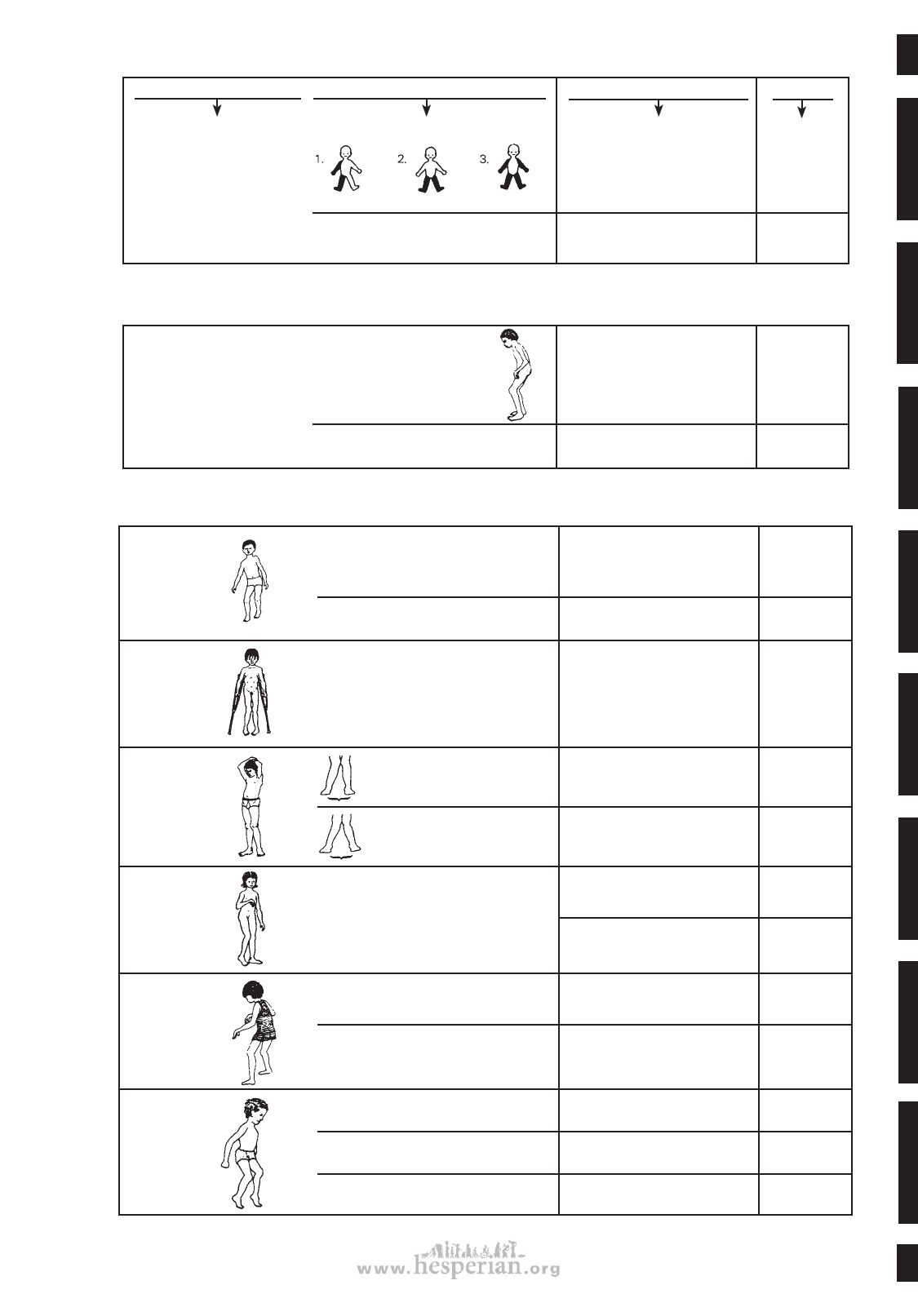
DISABILITY GUIDE 55
IF THE CHILD HAS THIS
weakness usually
with stiffness
or spasticity of
muscles
no loss of feeling
AND ALSO THIS
HE MAY HAVE
usually affects body in
one of these patterns
one side both legs
whole body
• 1: c erebral palsy (or
stroke, usually older
persons)
• 2 and 3: cerebral palsy
• occasional other causes
Muscles tighten and resist
movement because of joint pain.
JOINT PAIN
(many causes—see below)
SEE PAGE
87
130
JOINT PAIN
one or more
painful joints
• begins with or without fever
• gradually gets worse, but there
are better and worse periods
juvenile arthritis
other causes of joint pain
See chart on joint pain.
135
130
WALKS WITH DIFFICULTY OR LIMPS
dips to one
side with
each step
one leg often weaker and shorter
walks with
knees
pressed
together
••
usually begins age 4 to 8
may complain of knee pain
••
muscle spasm and tightness
upper body little affected
Check for:
•
••
polio
cerebral palsy
dislocated hip
damaged hip joint
spastic diplegic or
paraplegic cerebral
palsy
59
87
155
157
87
stands and walks
with knees
together and feet
apart
no other problems
walks
awkwardly with
one foot tiptoe
walks
awkwardly with
knees bent and
legs usually
separated
walks with
both feet
tiptoe
feet less than 3” apart
at age 3
feet more than 3”
apart at age 3
normal from ages 2 to 12
knock-kneed
113
114
muscle spasms and poor control
on that side. Hand on that side
often affected.
••
jerky steps, poor balance
sudden, uncontrolled movements
that may cause falling
••
slow ‘drunken’ way of walking
learns to walk late and falls often
••
weakness, especially in legs and feet
gradually gets worse and worse
legs and feet stiffen
(spasticity of muscle)
no other problems
hemiplegic cerebral palsy
(stroke in older persons)
athetoid cerebral palsy
• poor balance (ataxia)—
••
often with cerebral palsy
Down syndrome
hypothyroidism
muscular dystrophy
spastic cerebral palsy
normal? (some normal children
at first walk on tiptoes)
90
not in
book
89
90
279
282
109
89
292
disabled village children